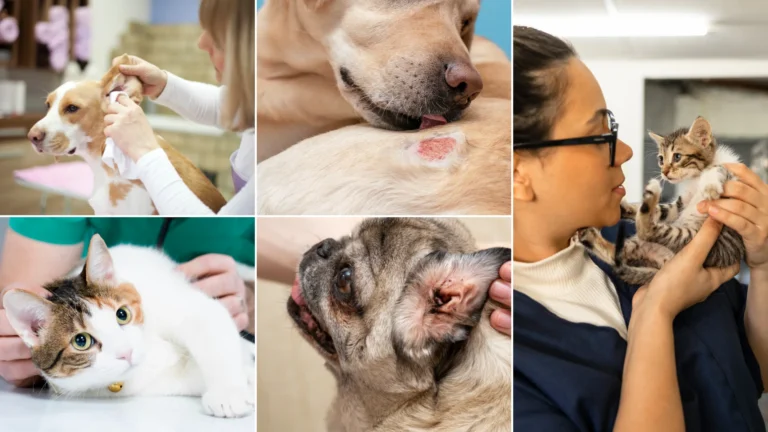Training a kitten sounds like a tall order, but what about an adult or even a senior cat? Is it even possible?
Well, there’s good news. The experts say you CAN teach your old cat new tricks!
Maybe you’ve adopted an older cat; maybe you’re just looking for a fun way to bond with your best pal; or maybe your feline friend could use a little extra exercise…
Whatever your reason, we’ve put together a few tips to help you and your kitty get started!
Dogs vs. Cats
Dog training is nothing new. If you get a puppy, you plan to spend many hours training them to do things like go potty outside, follow basic commands, and learn fancy tricks. If your dog is having behavioral issues, you surf the web, pick up dog-training books, call friends for advice or reach out to a local dog trainer for classes… Dog training is wonderful and it’s everywhere!
But what about your cats? Can your feline friends be trained, too?
It may come as a surprise, but the answer is a resounding yes! You can train cats of all ages to do tricks, respond to commands and even walk on a leash!
Start in Your Own Environment
It begins at home.
Most cats prefer staying in their own environment. If you’ve visited one of our clinics with your feline friend, you’ve probably gotten an earful all the way there!
While most dogs can be happy pretty much anywhere, cats are not typically big fans of the car, let alone new, loud places. So, for training purposes, your cat will be much happier and more relaxed if you train them right at home.
Tools of the Trade
Try motivating your feline friend with treats they really enjoy. Freeze-dried chicken, fresh tuna or any favorite treat will work. Try to avoid using the food they eat every day… It’s much more motivating for them to know they are getting something extra special during their training time with you! Remember to keep the bites small, this way you can give them a little taste after each successful attempt without them getting too full or distracted.
In addition to treats, another great tool is a clicker training device! It makes a simple clicking sound when pushed and uses sound to show your kitty when they have done something right! Just click the button right when Tiger completes a command, then immediately follow that with a favorite treat. Clicker training devices can help make learning faster and easier for your furry feline and can be found for just a few dollars at a local pet supply store or online.
Begin Small
Set your cat up to succeed by keeping your expectations reasonable.
Start with basic commands your cat can learn quickly, like giving a high five or playing fetch. Before you know it, you will both be proud of your early accomplishments and motivated to go even further in the training!
Starting with basic commands also helps to keep you and your kitty from getting bored or frustrated… or giving up altogether. Patience, positive reinforcement and keeping it simple are great ways to ensure both you and your feline friend are having fun, bonding, and learning new tricks together!
Total Recall
Once you and your kitty have a basic command or two under your belt, it’s a good idea to start recall training! This means training your cat to come when called. Not only is it a rewarding experience when your pet learns this command, it can also be a lifesaving one.
Should Tiger ever escape, you’ll have a much better shot at getting them to return if they are already trained to come to you when their name is called.
We recommend you start training at a time of the day when your cat will be hungry.
Leave about two feet between you and your cat.
Decide on a short verbal cue like, “Tiger. Come!” and immediately reward Tiger with a treat when they come to you.
Cats learn from repetition, so repeat the exercise a few times each time you train.
As your cat succeeds, gradually increase the distance between you.
Try 10-20 repetitions each day.
Walk it Out
Did you know, you can also teach your cat to walk on a leash? Studies show walking your kitty on a leash is not only great for their physical health, but also for their mental health! Cats love to explore, and may sometimes get bored inside, so being able to safely go outside with you and explore the natural world around them is a win-win.
If this sounds like something your cat may enjoy (and remember, not all cats are going to like leashes!) the first thing you’ll want to do is find a harness designed specifically for cats. Leave it next to your kitty’s favorite spot for a few days, allowing them time to check it out and get used to it being there.
Next, put the harness on your cat, but don’t attach the leash yet – just put the harness on and immediately give them some tasty treats or even their dinner. Leave the harness on while they eat. Once they’re finished, remove the harness right away. Repeat this process over the course of a few days or longer. Take it slow! This important process helps them to feel comfortable in the harness while also learning to associate it with things they like.
Once you and your feline friend are ready for the leash, attach it gently while giving them treats at the same time. Practice walking your cat indoors by dropping treats and encouraging them to follow you.
Keep in mind that even the best-trained pet in the world should still be microchipped and wearing a collar and ID tag! We’ve made it easy and even free in many cases. Learn more here.
Next level cat training – Welcome to the potty
We won’t teach you how here, but it is very possible to teach your cat to use the toilet. And flush it afterward. It may seem like a lofty goal, but what a potty trick!

Be Resourceful
Remember, every cat is different when it comes to which rewards best motivate them and how hard they will work to learn something new, so don’t give up if your first try doesn’t stick immediately!
If you find that you and your cat are enjoying learning these new tricks together, you can pick up one of these great books to learn even more:
Clicker Training for Cats Fun Kit by Karen Pryor
Teaching Your Cat Simple Tricks by Arden Moore
Cat Behavior and Training: Veterinary Advice for Owners by Ackerman, Landsberg, and Hunthausen
Good Owners, Great Cats by Kilcommons and Wilson
Once you find a flow that works, keep it moving and watch your cat continue to grow.
Before you go – If you enjoyed this post, you probably love pets as much as we do! Did you know that you can sponsor a pet in need each month with a Nose to Tail Team donation and receive a limited-edition tote bag? Join our Nose to Tail Team and help a pet family get the care they need each month for just $0.54 a day.







